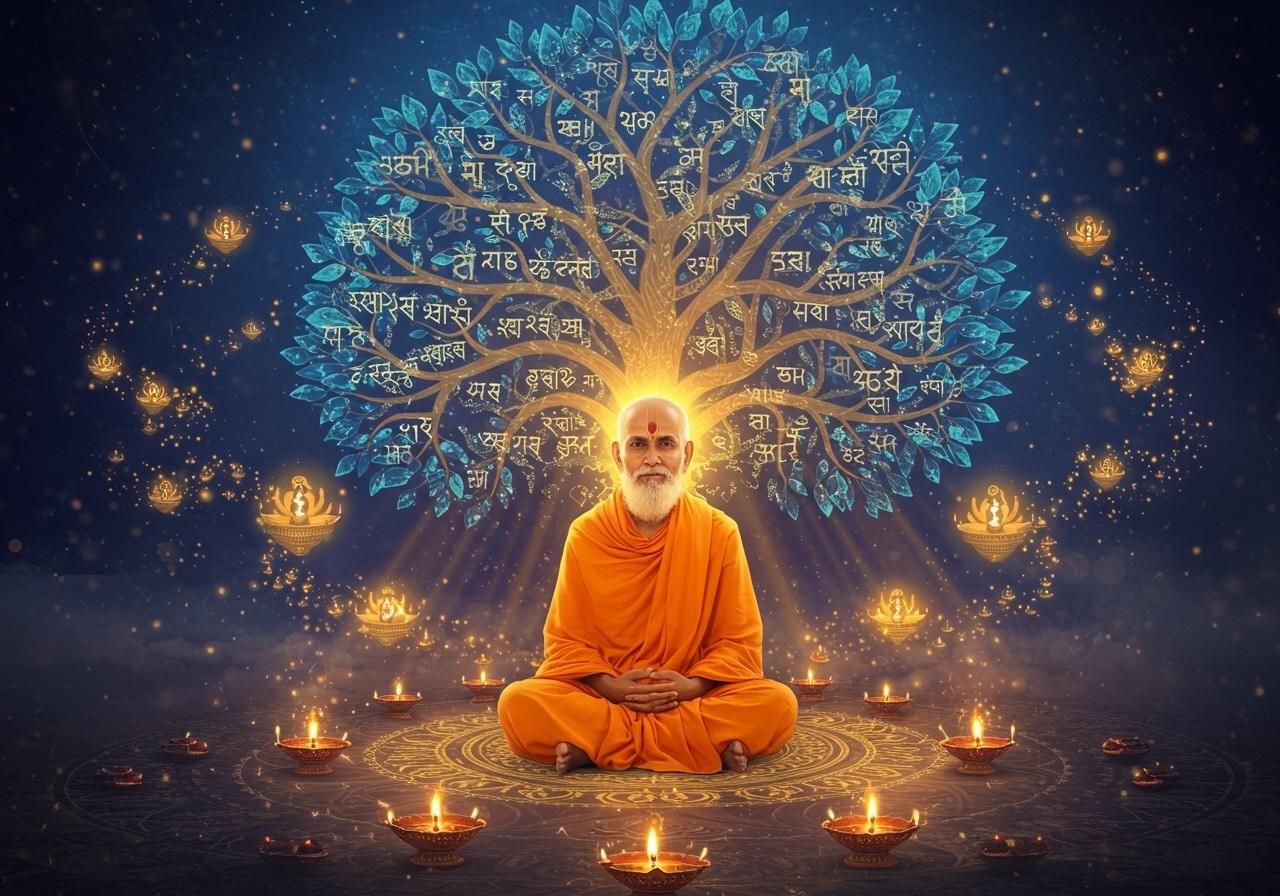
The Isha Upanishad, also known as Shri Ishopanishad or Ishavasya Upanishad, is one of the shortest and primary Upanishads, forming the final chapter of the Shukla Yajurveda. It is available in two recensions: Kanva and Madhyandina. This profound text offers deep philosophical insights into the nature of the self (Atman) and the universe (Brahman). This article explores various commentaries and translations, providing a clear understanding of its meaning and significance. We’ll delve into the historical context, key commentators, and the nuances of word-by-word translations for those seeking authentic knowledge.
Historical Context of the Isha Upanishad
The Isha Upanishad holds a unique place among Hindu scriptures. As the final chapter of the Shukla Yajurveda, it represents the culmination of Vedic wisdom. It is available in two slightly different versions, known as the Kanva and Madhyandina recensions.
- Timeline: Composed around 700 BCE, the Isha Upanishad stands as a testament to ancient Indian philosophical thought.
- Placement: Considered one of the principal Upanishads, it plays a crucial role in shaping Vedantic philosophy. It is embedded within the Shukla Yajurveda, highlighting its importance within the Vedic tradition.
- Themes: The Upanishad delves into profound themes such as Brahman (the ultimate reality), Atman (the individual self), the importance of renunciation and non-attachment, and the interconnectedness of all beings. It explores the relationship between the individual and the divine, offering guidance on how to live a meaningful life.
Notable scholars like Shankaracharya and Ramanujacharya have referenced and commented extensively on this Upanishad. With just 18 verses, its brevity adds to its depth and conciseness. The original Sanskrit text is renowned for its poetic beauty and philosophical richness.
Prominent Commentaries on the Isha Upanishad
Numerous scholars have offered their interpretations of the Isha Upanishad, enriching our understanding of its profound message. These commentaries provide different perspectives on the text’s core themes:
- Shankaracharya (8th century CE): His Advaita Vedanta perspective emphasizes non-dualism, the idea that the individual self (Atman) and the ultimate reality (Brahman) are one and the same. He interprets the Isha Upanishad through the lens of this non-dualistic philosophy.
- Ramanujacharya (11th century CE): From a Vishishtadvaita viewpoint, Ramanujacharya highlights the qualified non-dualism, suggesting a close relationship between the individual soul and the Supreme Being. He sees the individual self as part of Brahman, but not entirely identical to it.
- Madhvacharya (13th century CE): His Dvaita commentary presents a dualistic interpretation, emphasizing the eternal distinction between the individual soul and God. He believes that the individual self and Brahman are eternally separate entities.
Modern commentators like Swami Vivekananda and Sri Aurobindo offer contemporary views, bridging the gap between ancient wisdom and modern understanding. These diverse interpretations, while varying in their approach, collectively enhance our appreciation of the text’s complexity and depth.
Word-by-Word Translation and Meaning of the Isha Upanishad
A detailed word-by-word translation is essential for grasping the full meaning of the Isha Upanishad. This approach unlocks the nuances often lost in general translations.
- Nuances: The richness of the Sanskrit language allows for multiple layers of meaning. A word-by-word analysis helps uncover these subtle nuances and provides a deeper understanding of the text.
- Examples: Variations in word choices among different scholars demonstrate the interpretive possibilities within the text. Comparing these variations can shed light on the different philosophical approaches to understanding the Upanishad.
Understanding original Sanskrit terms is crucial for gaining deep insight. This approach enhances personal study and meditation, allowing for a more direct connection with the text’s wisdom.
Practical Insights and Applications
The wisdom of the Isha Upanishad remains remarkably relevant in contemporary life.
- Guidance: The Upanishad’s teachings offer guidance on living a balanced and meaningful life, navigating the complexities of the material world while pursuing spiritual growth.
- Relevance: Concepts like renunciation and non-attachment hold significant meaning in today’s world, offering a path to inner peace and freedom from material desires. They encourage a mindful approach to consumption and a focus on inner contentment.
- Tips: Integrating the Upanishad’s teachings into daily routines, such as through mindfulness practices and ethical decision-making, can lead to a more fulfilling and purposeful life.
Poojn.in: Supporting Your Spiritual Journey
Poojn.in, India’s leading online store for cultural and spiritual goods, offers a wide selection of products to enhance your study and practice of the Isha Upanishad:
- Meditation cushions and asanas: Find comfortable seating for extended study and meditation.
- Sanskrit texts and prayer materials: Access authentic versions of the Isha Upanishad and other scriptures.
- Dhoop and incense: Create a serene atmosphere conducive to contemplation and study.
Conclusion: Embracing the Wisdom
The Isha Upanishad, with its profound verses and insights, serves as a timeless guide for spiritual seekers. By exploring its various facets, we unlock a deeper understanding of ourselves and the universe, paving the way for a more meaningful and fulfilling life.


